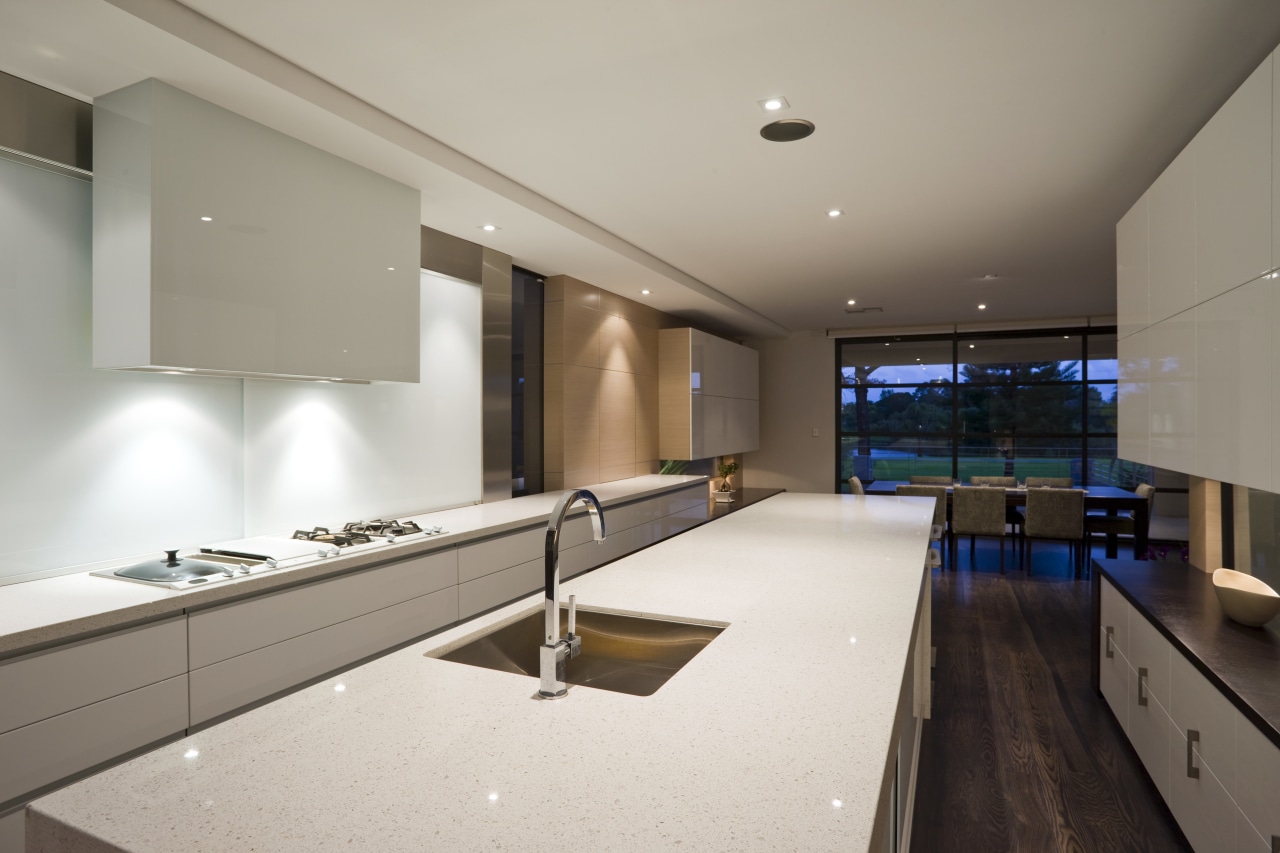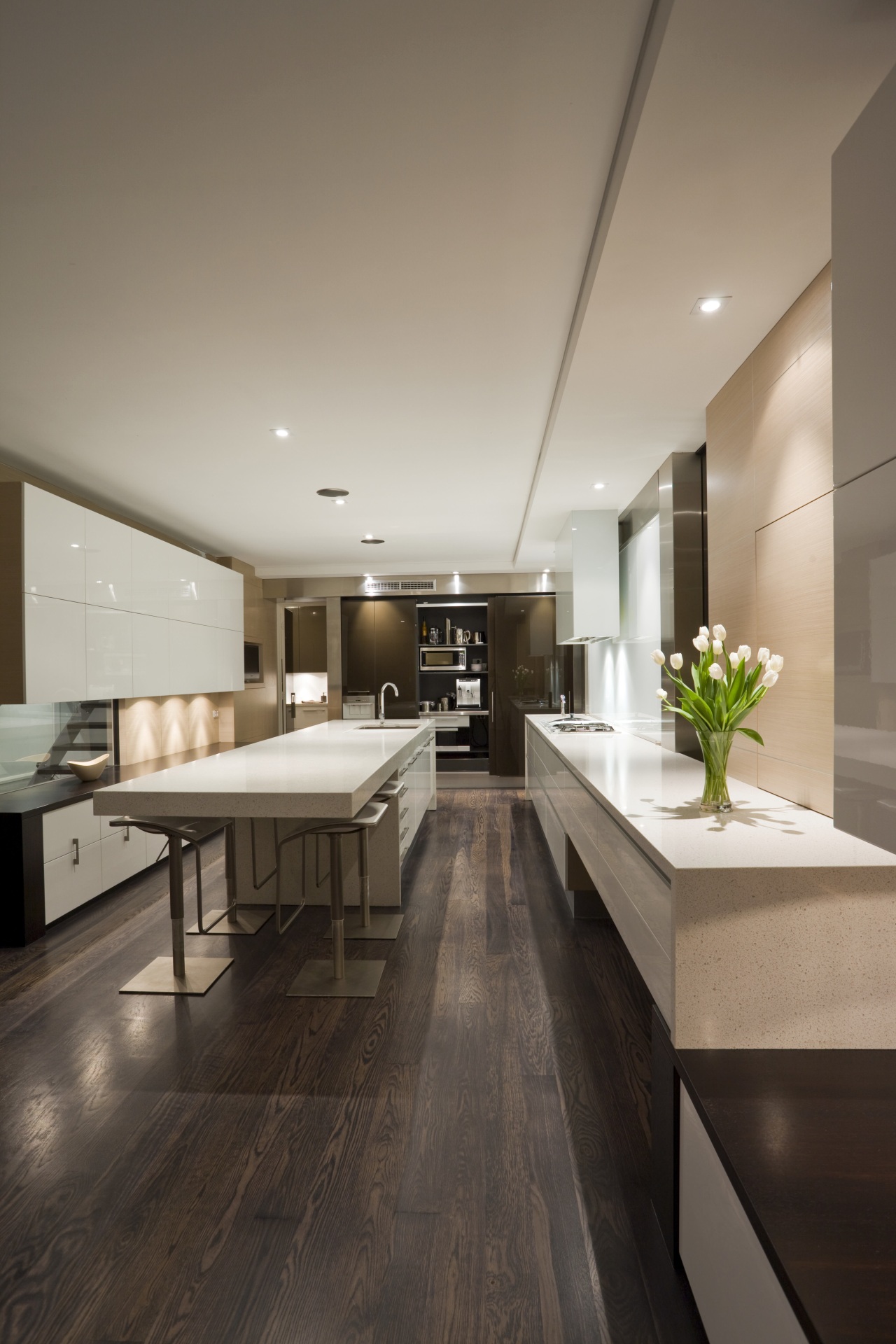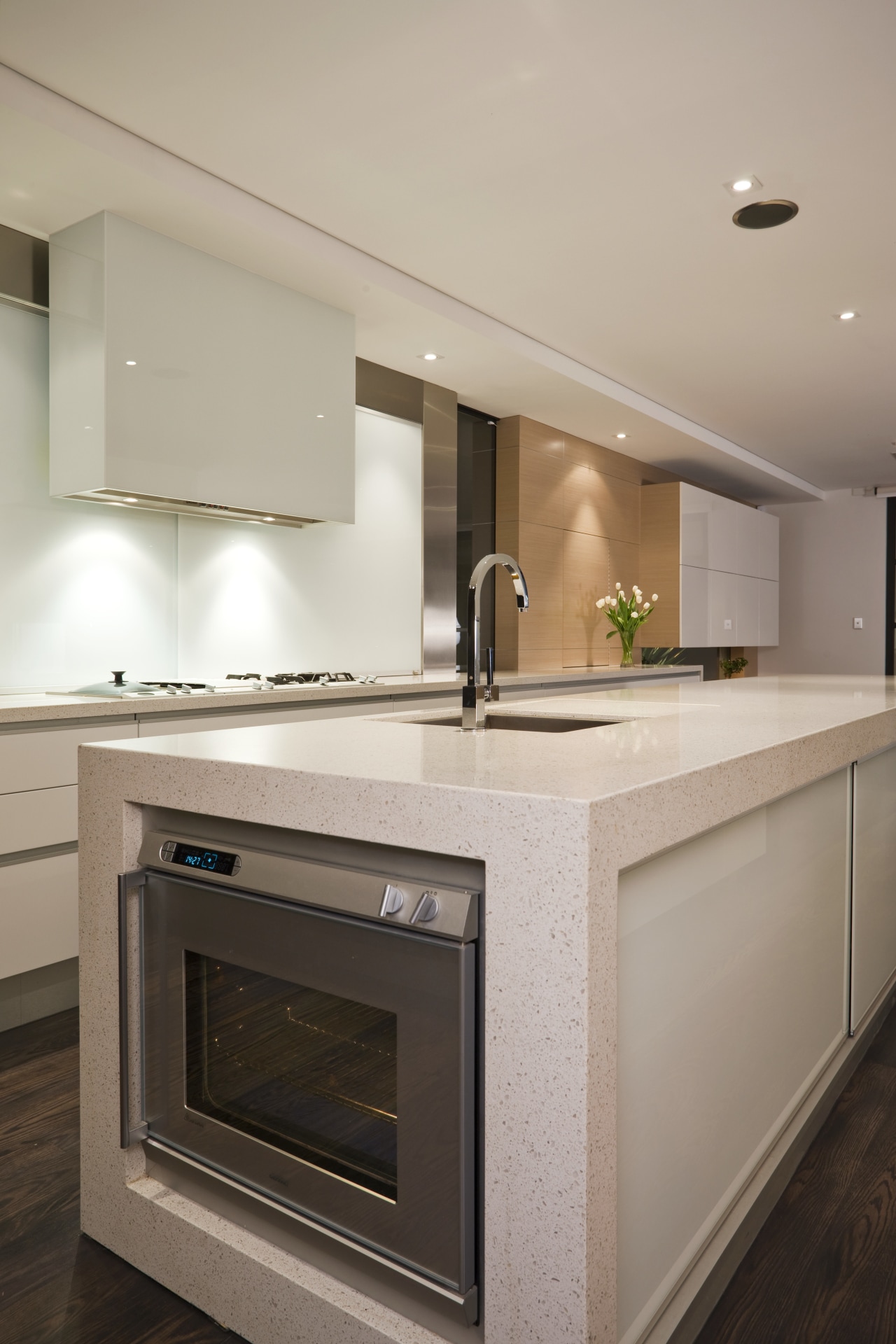Vanishing act
Everything in this kitchen is cleverly integrated, disguised or tucked away so that it blends seamlessly with adjacent living areas

Long wall elevations create great opportunities for designing a kitchen that includes generous amounts of bench space and storage. However, there's also a risk that large banks of cabinetry may make the kitchen look cluttered and heavy.
In the kitchen featured on these pages, one wall of the space allocated to the kitchen is 12m long, and the opposing wall is about 3m shorter. Both walls include windows, on one side looking out to the garden, and on the other connecting the kitchen by a square porthole to the central hall of the house.
Designer Leon House says the length of the kitchen created a design challenge because it meant the area was unusually long and narrow.
"It also provided an opportunity to link the kitchen, dining room and living spaces, and incorporate plenty of storage. On the other hand, we didn't want the kitchen to look crowded," he says.
The design was partly driven by the owner's requirement for clear, empty bench space, and for everything possible to be tucked away.
"The kitchen is exposed to the dining and living rooms so it is part of these areas, and I wanted to be able to use them without the space feeling too much like a kitchen. Once all the doors in the kitchen are closed, you can't see any appliances," he says.
To achieve this aim, the designer has subtly varied the appearance of the cabinetry from where it intersects with the dining area through to the far end of the kitchen. For cohesion he has used the same materials throughout white lacquer and dark chocolate-stained oak.
Where the kitchen meets the living room, the cabinetry is designed in the style of freestanding furniture. A low unit on the wall behind the dining table fits neatly below the narrow horizontal window. This can be used as a serving area, or, with cushions, it could double as a window seat. Above, an overhead unit offers extra storage. Still visible from the living area, the dresser butts up to the kitchen bench, which cantilevers across a floor-to-ceiling window before becoming more conventional cabinetry, complete with drawers.
"The first section of the kitchen bench is cantilevered to give it a lighter, more furniture-like feel, and to offer a view of the garden," says House.
Once past here, the cabinetry takes on a more kitchen-like appearance, with drawers below the benchtop. A wall of reflective, dark-chocolate glass doors marks the far end of the kitchen.
These doors conceal the refrigerator, microwave and pantry. To their left, a fourth door in the same dark glass leads to the laundry, which contains a second refrigerator and further storage.
"The glass wall causes the far end of the kitchen to appear to taper off to a dark, diminishing point, as if the space doesn't go anywhere," says House.

To maintain the clean lines the owners wanted, the oven, which could not be integrated, has been inset into the far end of the island, helping to keep it out of sight. The rangehood is concealed in a white lacquered storage unit above the hobs. For additional convenience, the white glass splashback behind the hobs is actually a pair of sliding doors that open to expose a 400mm-deep cupboard the owner uses for storing small appliances.
At the end of the bench are a small auxiliary sink and a hot tap for tea-making, while the main sink is on the island opposite the hob, above the fully integrated dishwasher.
The long bench and the island provide plenty of preparation space. Rather than creating more bench space on the other wall of the kitchen, a second, casual dresser was designed to match the one on the wall behind the dining table. As well as offering additional storage for platters and baking dishes, it too can provide additional seating.
"The idea behind this is that one side of the kitchen is designated for activities such as cooking and food preparation, while the other side is an area where we can relax," says the owner.
Colours and finishes are kept to a minimum, with most horizontal surfaces finished in dark chocolate tones and vertical surfaces lacquered white. To add warmth to this colour scheme, the walls on either side of the splashback and behind the dressers are clad in a light ash veneer.
"This helps control the lines and creates a grid pattern that absorbs a dumb waiter in the wall and the mix of window shapes," says House.
Credit list
Kitchen manufacturer
Cabinetry
Flooring
Splashback
Taps
Refrigeration
Water dispenser
Benchtops
Blinds
Kitchen sink
Oven, cooktop, ventilation
Dishwasher
Dining furniture
Story by: Mary Webb
Home kitchen bathroom commercial design
Diving into nature
Classic looks, contemporary efficiency
Personality plus









